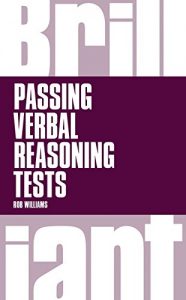Interview Skills
The basic principle behind Competency-Based Interviewing (CBI) is that:
PAST BEHAVIOUR IS A STRONG INDICATOR OF FUTURE BEHAVIOUR
CBI is a key part of the selection process because it enables you to assess the extent to which a candidate is able to use the core competencies we know to be associated with superior performance in a role.
CAR is a structured approach that focuses on the candidate’s recent experience to identify situations that would have enabled them to use these core competencies. By:
- Understanding the context that the candidate was responding to
- Identifying the actions taken by the candidate
- Establishing the consequences of these actions in terms of results, outputs or impact on the business
The interviewer is able to assess the effectiveness of the behaviour demonstrated by the candidate.
There are therefore 3 critical stages in the process:

Interview Skills – CONTEXT
The CAR process begins by asking candidates to use examples from their recent experience to respond to set questions. Every example should contain information that lets the interviewer know “why” something took place. “Why” can be answered by finding out:
- The circumstances surrounding the example they are going to talk about
- The nature of the situation that they found themselves in
- The task or activity that they had to do in response
Interview Skills – ACTION
Actions are what people say or do to complete a task or activity.
Without further prompting, candidates frequently explain their Actions in general terms such as:“I completed the project” / “I put together a training programme for a colleague” / ‘I always fixed the equipment when it broke down” / “I helped my colleagues”
All of these are vague and leave you as the interviewer not knowing what was actually said or done – their Actions.
Interview Skills – RESULT
In all those situations you as an interviewer must ask prompting or probing questions to get down to a level of detail that enables you to understand what the individual:
- Said or
- Did
The Result is the outcome of the Actions that an individual has taken. Knowing the Result allows the interviewer to evaluate the effectiveness of the Actions taken and the behaviours used.
INTERVIEWING FORMAT
The interview format is designed to guide you through the 3 stages and provide space on the script for you to record in note form the evidence or information you have collected.

INCOMPLETE CAR’s
To ensure that you understand what a behavioural example looks like it is just as important to be able to identify what is not a clear behavioural example. These are incomplete CAR’s and provide no more than indications of what somebody:
- Feels or thinks about a situation that they were faced with (Feelings and Opinions)
- Believes they would do in certain circumstances (Theoretical and Future Related)
- In general terms has done in the past (Vague and Generalised)
None of these is specific enough to help you make a sound evaluation of their past behaviour. Some examples:
Feelings and Opinions
“I thought I was the best VDU operator and deserved more responsibility” / “I was bored with processing lots of data all day every day” / “I really enjoyed my job working with customers; I’ve always been told that I am very good at listening to people’s concerns and issues”
These responses provide no insight into an individual’s behaviour and what they did. Their answers relate to how they felt about a situation that they were faced with.
Theoretical or Future Orientated Responses
“If I had been dealing with the problem I would have done it differently”
“I am always good at dealing with clients on the phone”
“I won’t make a lot of mistakes if I am given a lot of work to process through the system”
These responses indicate what an individual thinks they should do or would do if they were faced with that situation.
Vague and Generalised Responses
“I tend to deal with staff problems when they occur and sort them out then”
“…..and I managed to persuade the client that it was a good deal and they bought the product”
“My approach to disciplinary issues is generally quite tough although I will listen to what others have to say”
These sorts of responses are summaries or descriptions of what they did. The interviewer needs to get more detail to understand the sort of behaviours that the individual did to resolve the situation they are reflecting back to you.

WHAT IF I HAVEN’T GOT WHAT I NEED?
- Vague or generalised info.
- Not all elements of the CAR have been provided.
- You have not got sufficient information to make a judgement regarding the CAR.
The structure of the questions is designed to help provide the 3 elements of the CAR.
The recording of the information within the interview guide is also in a CAR format:
HOW DO I KNOW?
So that:
- information is easy to collect and reminds the interviewer of the CAR format
- a standardised way of summarising the information collected
- enables consistency of approach and assessment
INTERVIEW SKILLS FUNNEL
CONTEXT
TELL ME ABOUT A TIME WHEN…?
HAVE YOU EVER FOUND YOURSELF FACED BY…?
WHAT SORT OF SITUATIONS HAVE CAUSED YOU TO…?
BROAD ISSUE
WHAT WAS IT ABOUT THAT…?
WHAT DID YOU FIND DIFFICULT ABOUT…?
SPECIFIC EXAMPLE
CAN YOU GIVE ME AN EXAMPLE OF THIS…?
WHAT WERE THE PARTICULAR ISSUES…?
INDIVIDUAL INVOLVEMENT
WHAT WAS YOUR INVOLVEMENT IN…?
ACTION
WHAT DID YOU DO…?
HOW DID YOU ACTUALLY DO IT?
HOW DID YOU COPE WITH…?
RESULT
WHAT HAPPENED…?
HOW SUCCESSFUL…?

EFFECTIVE FOLLOW UP QUESTIONS
These are clear indications of a candidate’s intention to use vague, non-behavioural language:
For example, vague responses often begin with phrases like:
- I am always doing….
- In those situations, I usually…
- Most of the time, I would….
- Usually, I….
- Sometimes, I….
- Normally I….
Some questions to focus their responses more appropriately are as follows:
- Exactly how were you involved?
- Tell me exactly what you did.
- Take me through the process, step by step, explaining what you did.
- Describe the specific situation and the actions.
- How many times in the last months have you…?
- Describe one particular time when…
- Think of one particular day when this happened.
- Give me more specific detail.
- Give me a specific example of this situation.
- How were you personally involved?
Focusing responses more appropriately
Phrases like the following show the interviewer that a candidate is about to speculate about future behaviour or give a theoretical response:
- Next time that happens, I’ll…..
- I probably could…. may change the way I… think now I’m able to…….
Some questions to focus their responses
- In the past, can you recall an example of…?
- The last time that happened, what did you…?
- What has been …?
- Can you give me a specific example of when this actually happened in the past?
Focusing responses more appropriately
These phrases can give the interviewer a clue that a candidate is about to express a feeling or opinion about a situation:
- I was really good at…. did more than my share… I thought I was….
- If you ask me, I’d say….
- So if I had been the Manager, I would have….
Some questions to focus their responses more appropriately are as follows:
- Give me an example of what you did as a result of feeling like this
- How do you know that?
- How can you measure that?
- What actions have you taken because of your feelings?
Follow up questioning is critical because:
- Most responses to questions will not contain all the aspects of the CAR.
- The interviewer must determine which parts of the CAR are missing and ask questions that will pin down these missing elements.
Focusing people’s responses to tell you what you need to know can be helped greatly by using appropriate non-leading open questions. We can illustrate the difference between leading and non-leading (open) follow-up questions.
Interview Skills Examples
| Leading Questions | Non Leading (Open) Questions |
| I suppose your boss was pleased with that? | What feedback did you get from your boss? |
| You didn’t let her get away with breaking the rules, did you? | What did you do when you discovered she was breaking the rules? |
| When you served the customer I assume you used his name? | What did you say to that customer when you served him? |
| You left that job for more money? | Why did you leave that job? |
More Interview Skills Examples
Ensure that you avoid using open theoretical questions. The following examples illustrate the difference between theoretical follow-up questions and non-theoretical follow-up questions.
| Theoretical Questions | Non-Theoretical Questions |
| How should you have tackled that problem? | How did you actually tackle that problem? |
| With hindsight what would your approach be next time? | What was your specific approach On that occasion? |
| How do you go about delegating to staff? | Tell me how you delegated that task to that member of staff? |

ADVANTAGES OF FOLLOW-UP QUESTIONS
- Asking follow-up questions helps the interviewer collect enough complete behavioural examples to understand the candidate’s typical past work behaviour
- Asking follow-up questions reduces candidate “faking”
Our Assessment Centre Design
SUMMARY
The interviewer has:
- An interview Guide which provides structural behavioural questions that ensure the interview will focus on relevant information
- Follow-up questions which ensure collection of the CAR
These tools are used to collect sufficient examples of past behaviour and thereby provide an accurate picture of a candidate’s past experiences and accomplishments.
To use follow-up questioning effectively, the interviewer must first analyse a candidate’s response and categorise it as providing:
- An incomplete CAR response
- A partial behavioural example
- A complete behavioural example
Once a response has been classified, the appropriate follow-up technique can be applied. The two follow-up techniques are:
- Follow up to redirect the candidate to a behavioural example
- Follow up to collect the CAR
To formulate an appropriate follow-up question, the interviewer must:
- Ask an open, non-leading question
- Avoid theoretical questions

CORE INTERVIEW SKILLS
Interviewers should aim to get the best out of every candidate and need to:
- Adopt an encouraging and supportive manner
- Be discerning and challenging.
- Demonstrate, both by listening and looking attentively, that they are interested in the candidate
- Create an appropriate atmosphere in which candidates will relax and talk more freely, perhaps more freely than they had intended.
CORE INTERVIEW SKILLS PART II
There are some core skills that need to be taken on board to make the most of the structured competency based interview approach. These fall into various categories, namely:
- Interviewers Non Verbal Behaviour
- Questioning Techniques
- Maintaining Candidate’s Self Confidence
- Barriers to Effective Interviewing – Being Aware of and Ensuring that they are not demonstrated to Candidates
Our Assessment Centre Design
INTERVIEWERS NON-VERBAL BEHAVIOUR
Positioning
- On the basis of a number of research findings it is considered that a distance of from three to five feet is best suited to a selection interview. Less than three feet seems to produce discomfort and uneasiness for most people, while more than five feet becomes overly formal.
- As distance increases, perception of the participants by each other is more negative.
Posture
- How the interviewer sits in their chair is also important for demonstrating attention and a real interest.
- The interviewer’s body needs to be directly orientated towards the candidate.
- They should sit up and slightly lean forward in order to show energy and a concern to get on with the task in hand, efficiently and productively.
Eye Contact
- Of course strong eye contact is essential for showing interest.
- Also for showing ease and lack of embarrassment.
- Plus, a willingness to face up to what the candidate is trying to communicate.
- This indicates when the interviewee has finished talking.
- Interviewers who do not look sufficiently at the candidate will find it harder to control the interview comfortably.
Facial Expression
- Facial expression should indicate interest in what the candidate is saying.
- Often when listening our facial expression appears blank! Try to ensure the expression conveys interest and avoid showing boredom, irritation or disbelief.
Head Movements
- Head nodding can provide messages that as the interviewer you are keeping abreast of what is being said, that such information is useful and that you would like to hear more of it.
Gestures
- It is necessary for the interviewer to come across as calm and confident in what they are doing and gestures can help or hinder this.
- Clenched hands and entwined legs can give the impression of nervousness.
- Hands can be used both to give a greater emphasis to the interviewer’s questions .
Your Voice
- Encouraging or discouraging messages can come from the way words are produced.
- Nervousness and under-confidence in the interviewer can come across by talking too quickly or too slowly – calmness by having a steady, reasonably energetic pace.
- Disinterest could be the message received if the tone of the interviewer’s voice is monotonous without different levels of pitch.
- Criticism and judgement, which within the interview can be disabling, should not be conveyed by the interviewer’s tone of voice.
Assessment Centre Design
Verbal Behaviour
- Restating and summarising shows the interviewer is intent on getting an accurate picture of what the candidate is saying.
- Perceptive probing and use of follow-up questions again reinforces the interviewer’s interest.
QUESTIONING TECHNIQUES
The usual types of effective questions apply to competency based interviewing.
Open Questions
- Open questions often begin with who? what? which? where? why? or how?
- Open questions are often used to start off a new topic or subject and indicate to the interviewee that they are expected to do the talking.
Probing Questions
- These sorts of questions are designed to search for information in greater depth.
- They are vital for detail and for focussing the candidate and interview on particular areas.
THE COMPETENCY BASED INTERVIEW SCRIPT
The interview script contains all the information and questions needed to conduct a fair and accurate interview. It provides:
- Notes on preparing for and opening the interview
- Structured Behavioural Questions which help the interviewer collect complete information on an candidate’s past jobs and experiences
- Notes on closing the interview and rating the candidate.
The Interview Script provides ample space for an interviewer’s notes. These notes document the interview.
Assessment Centre Design
WHAT’S IN AN INTERVIEW SCRIPT?
The Interview Script will contain:
Cover Page
- Provides space for entering candidate’s name, interviewer’s name, the date and any other necessary information
Opening Page
- Provides a checklist for preparing for the interview
- Provides an outline for opening the interview
- Outlines the process and the information that you need to share with all the candidates
Structured Behavioural Question Section
- Contains questions which direct a candidate to discuss job-related behaviour around target competencies
Guidelines for Ending the Interview
- Reminds the interviewer to close the interview in a friendly manner
BARRIERS TO EFFECTIVE INTERVIEWING
- Lack of concentration:.
- Stereotyping: prejudging behaviour on the basis of a similar previous experience.
- ‘Halo’/’horns’ effect: generalising across all competencies positively or negatively on the basis of one characteristic.
- Primacy effect: an impression made at the beginning of the interview can overshadow conflicting information observed later.
- Recency effect. The opposite of the above primacy effect.
- Attribution theory. It is important that observers take account of situational factors affecting behaviour.
Subjective stance:
We do not like to have our own ideas, prejudices and point of view overturned. Nor do we like to have our opinions and judgement challenged. Consequently, when a candidate says something that clashes with what we think, believe and hold firm to, then we may unconsciously stop listening and plan a counter-attack in our own minds. Similarly a candidate might use a word that triggers an unjustifiably negative or positive reaction.
The most common mistake made in recording is to start to evaluate whilst we are interviewing.
Verbal Reasoning practice test book

Rob Williams Assessment offers many other free psychometric tips and practice tests.
